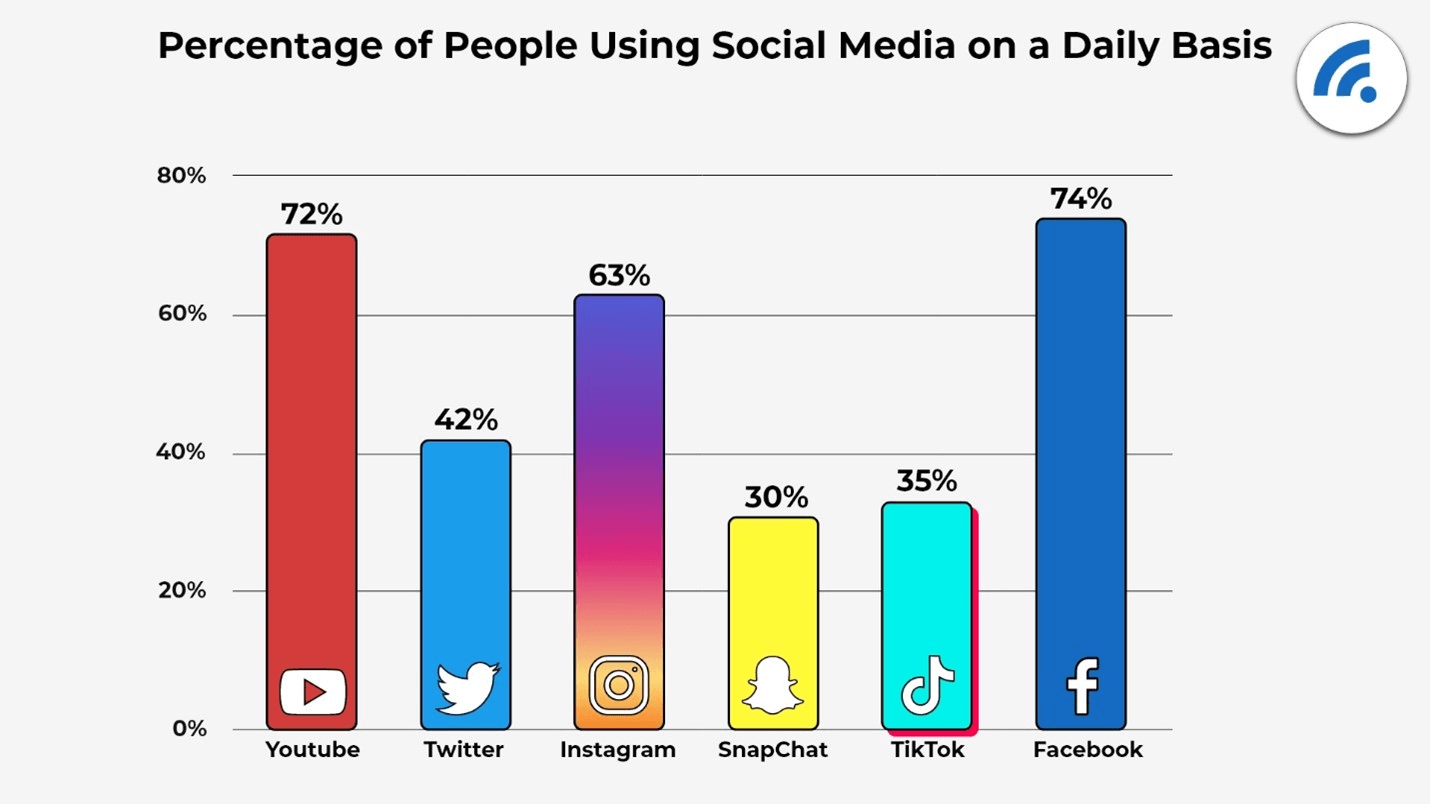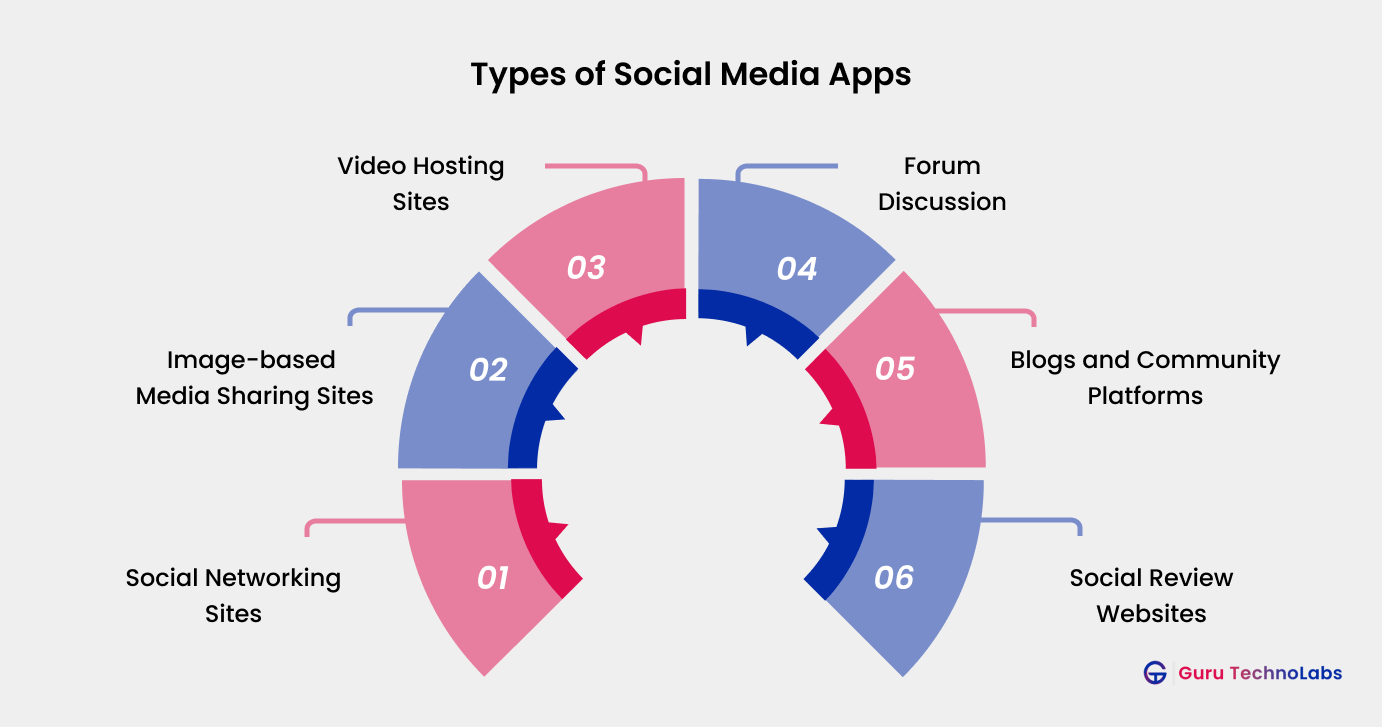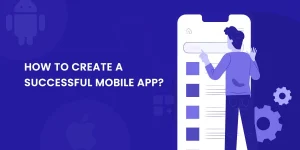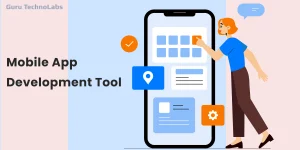How to Make a Social Media App? A Comprehensive Guide

In the past five to ten years, users’ time spent on smartphones has increased significantly. Over half use several social media apps, such as Instagram, Facebook, WhatsApp, Snapchat, and more. The social media app market covers the whole world and targets youth globally.
The social media app market could reach $939.679 billion by 2026, which shows how impactful these platforms are—considering the success of popular platforms such as Instagram, TikTok, Threads, Facebook, etc., entering the social media app market seems promising. As mentioned earlier, the apps popped up in the market in recent years and became the talk of the town.
Therefore, the growing popularity of social media apps has propelled businesses to build them because of their engagement potential. As a result, entrepreneurs’ demand for social media app development services has increased to make the finest apps and stay ahead of the competitive curve.
This detailed guide will describe the critical peculiarities of social media app development, explore the stepwise process, dig into essential features, and uncover other related aspects. Let’s get started. Shall we?
What is Social Media App Development?
Social media app development is creating a mobile app that allows users to connect and interact with each other. These apps typically include features such as user profiles, activity feeds, messaging, and search.
Social media apps can be developed for a variety of purposes, such as:
- Connecting people with friends and family
- Sharing news and information
- Building communities and shared interests
- Promoting products and services
Social media app development can be daunting, but it can also be rewarding. A well-functional and captivating social media app can reach a considerable audience, engage with customers, and generate revenue.
Social Media App Development is Gaining Momentum
The global social media app market was valued at $49.9 billion in 2022 and is anticipated to grow at a CAGR of 26.2% from 2023 to 2030.
As Statista states, the volume of time people spend on social media is only increasing year by year. In 2012, the average time spent on social media increased to 153 minutes.

(Source: Queen Bee Media)
Popular social media apps such as Snapchat, Facebook, Instagram, WeChat, etc., cover a vast market. Facebook is the market leader and has more than 3.3 billion active users. This tendency makes this entire market an optimistic investment area for startups and well-established business owners.
Moreover, integrating emerging technologies such as AI, ML and AR/VR into these apps can offer the best user experience, and they won’t go to any other platform. For instance, we all know how, based on users’ preferences, Instagram suggests “explore” feeds, making the overall platform entertaining.
Types of Social Media Apps

Before starting the social media app development process, you need to understand and explore the type of social media app you want to develop. Knowing the app type will help you understand your target audience and perform detailed market research.
There are many social media apps; let’s discuss each without any ado.
Social Networking Sites
Social networking sites are tools that enable individuals to create, sustain, and share content with friends, families, and other people they may know. Their primary function is to provide an environment for the interaction and development of new acquaintances or close connections.
Some of the most used social networking sites are Facebook, which has over 2.90 million active users monthly, and LinkedIn, which enables employment seekers to find employers or peers to connect with.
Image-based/ Media Sharing Sites
Image-sharing sites focus on media objects where people can share pictures and paintings and communicate with other members of groups of artists and enthusiasts. One can only like a post, comment on a post, and share posts, making it an engaging experience based on the aesthetic factor.
The most well-known example is Instagram, which has more than one billion monthly active accounts with real-life content, from casual phone snapshots to dramatic prints.
Video Hosting Sites
Video hosting and sharing sites let viewers share and upload video content with others and find relevant videos based on their preferences. These sites have several features-streaming, video post-processing, and others-that allow a user to exhibit his or her creativity through dynamic images.
YouTube alone currently has more than 2 billion active monthly users who watch billions of hours of video content daily.
Forum Discussion
Forum discussion sites are sites on the World Wide Web where users compare notes or pose questions, post information, and discuss problems related to a particular subject. These sites include a thread format for the conversations, which makes it easier for users to follow topics and contribute their wisdom in the correct order. Online forums can be helpful tools for obtaining valuable information, finding support, and creating communities.
Quora is the best example. It aims to provide Q&A services in every topical sphere, where professionals and majors select the most exciting and appealing subjects for discussions and additional explanations.
Blogs and Community Platforms
Social forums and web blogs allow a person or a group of people to express opinions and disseminate information on a given field of interest. They also tend to provide more elaborate content varying from brief updates typical for regular social networking sites. Most blogs also have a comment section for the readers to interact with, giving them a community feel.
Websites such as WordPress and Medium are a large part of this category.
Social Review Websites
Social review websites allow people to share information and experiences about products, services, businesses, etc. These platforms enable consumers to make sound decisions based on what other people who have used those products have to say it’s a form of word of mouth promoted by the internet. Users can share detailed reviews, photographs, and even hints, which will make the consumer experience even more productive.
A notable example is TripAdvisor, which specializes in travel content. Here, people can read about hotels, tourist attractions, and travel experiences.
Key Features to Integrate in Social Media App
Now that we have discussed some of the popular types of social media apps let’s take a closer look at what it takes to build a winning one. There are the most important features to consider:
User Profile Authentication
Security comes first to build trust. Offer features like multi-factor authentication to protect user accounts against malware practices.
Profile Customization
Users can personalise their profiles with images, bios, pictures, and interests. This customisation fosters a sense of ownership and increases user engagement.
Content Sharing
Allow users to share videos, images, and posts across various platforms easily. Seamless content-sharing options help users reach a wider audience.
Real-time Notifications
This feature keeps users informed of the latest trends and events regarding updates and new content. It delivers the finest user experience and encourages frequent app usage.
Feeds
Explore feed that curates content based on user preferences and interactions. An interesting feed keeps users hooked and encourages them to explore more.
Chats / Messaging
Let users communicate directly with their friends and followers. This feature promotes community building and enhances user interaction within the app.
Advanced Search Bar
A robust search bar allows users to find content, profiles and topics of interest. Simple navigation can improve the user experience and retention.
Live Streaming
Add live streaming facilities to allow users to broadcast updates in real-time. This feature can drive engagement and offer instant notification.
Analytics
Offer advanced analytics and other settings to users to track their performance. This data is essential to make informed decisions about marketing strategies.
Customer Support
Offering dedicated customer support, which can include live chat support, a ticket system, and more, helps resolve issues quickly. This builds loyalty and improves the overall user experience.
A Stepwise Process to Social Media App Development
Knowing the basics of how to make a successful app is paramount of importance. In this detailed guide, we will walk you through the stepwise process one needs to perform while building social media app from scratch and how Guru TechnoLabs can ease this process:
Define Your App’s Purpose
Before you begin the actual social media app development process, define your clear purpose for this app. Ask yourself specific questions like:
- What is the primary purpose of your app?
- Who will be your target audience?
- What features do you want to integrate to make your app unique?
- What goals do you want to achieve from this app?
- What unique value proposition will your app create?
Once you answer these questions and create a detailed roadmap, executing the idea will be easy.
Choose Experienced App Development Company
Now, when you are done collecting all the information and making the list of data required to develop an application, it’s time to choose an experienced and reputed mobile app development company that can offer you a skilled team to develop an app.
Now, the point is how to find a professional technology partner. Here are some ways you can try such as:
- Take the help of social media sites
- Compare the services of popular companies
- Look for satisfactory reviews and team
- Choose Guru TechnoLabs for fruitful collaboration!
Select the Right Technology Stack
Since you are going to develop a social media app, you must choose the proper technology stack. From programming languages to frameworks to databases and third-party integration, choosing the right stack helps you develop a scalable social media app.
The tech stack for developing Android, iOS and cross-platform social media apps differs. For instance, for developing a social media app, the different tech-stack is used:
- Java/ Kotlin / Python as the programming language
- Flutter as the app development tool
- Jetpack is composed of the UI framework, etc.
Decide the App Features & Functionality
Once you figure out ideal customer pain points, you know which features to integrate, brainstorm with your team members and categorize the primary and advanced features. Pay attention to the main features first, then scale up your app by adding extra functionality.
To develop a feature-packed and user-centric social media app, you should remember that its success is based on constant innovation. Thus, keep experimenting with new features to keep pace with users’ evolving needs.
Wireframing and Prototyping
Consider building appealing wireframes and prototypes because these are two pivotal digital assets for creating a social media app. Wireframing helps you bring your unique app idea to life that will match your expectations.
Leveraging the best wireframing and prototyping tools, you can build a social media app that helps clarify the app development process.
Development Stage
In this stage, the design is converted into a working product. The development team or hired developed writes the front and back-end codes and adds the necessary functionality. Various programming languages are used to create a scalable app.
However, if you have opted for a low-code or no-code app development approach, the process looks different. Readymade and DIY app platforms allow you to build an app without writing code.
Testing of a Social Media App
Once the social media app is developed, the testing team performs various tests to ensure it is glitch- and error-free. Testing the app before its launch is crucial as it allows the team to track and evaluate the app’s performance.
At Guru TechnoLabs, we perform various testing procedures to ensure that the app is of high quality and capable of running on any device and browser.
Launch and Maintenance
With the help of developers, you have built an excellent social media app. Now, it’s time to launch your app into the market and wait for users to download it. To keep your social media app functional, update it regularly.
Keep adding new features, update it regularly, fix small bugs, and improve it to make it more popular among users.
How Much Does It Cost to Build a Social Media App?
As some projects can take up to a year to finish, it can be difficult to estimate the exact cost of developing an app for your company. You may also be able to define the estimated pricing with the aid of additional underlying factors:
- Team’s location
- Features you want to integrate
- Complexity of the app
- Platforms and devices supported
- App design
- Cost of app maintenance and marketing campaigns
Note: If you want to develop a social media app with a Minimum Viable Product, you should focus on adding basic features that will help your users. Collect user feedback, and make necessary improvements to make it better.
| Category | iOS Costing | Android Costing |
|---|---|---|
| Desinging cost | $1,200 – $12,000+ | $1,000-$10,000+ |
| Development cost | $10,000 – $100,000+ | $5,000-$15,000+ |
| Maintance and upgrades | $2,500 – $15,000+ annually | $2,500-$10,000+ |
| Marketing & promotion cost | Varies By Marketing Strategy | Varies By Marketing Strategy |
Note: These costs are estimated and may differ based on the specific requirements of your social media app development, the experience of social media app developers and location of the team you choose to work with.
Interesting Ways to Monetise Your Social Media App
Social media app monetization is becoming important because these apps are becoming the most preferred medium for content consumption. From image-sharing apps to video-sharing platforms to communication apps, social media apps are everywhere.
Entrepreneurs are using many app monetization strategies to make decent profits. Let’s break down each model and identify which one is the best fit for you.
In-app Purchase
This strategy works well for games and social media platforms, offering customization options for exclusive content. By creating compelling value, developers can boost revenue while keeping the user experience engaging.
Advertising
This is one of the most popular strategies where brands pay to promote their products within the app. By integrating ads seamlessly into the user experience, apps can generate significant revenue without directly charging users.
Premium Subscription
This approach encourages loyalty while offering a steady revenue stream. By highlighting the added value of premium membership, social media apps can attract users willing to invest in premium functionalities.
Freemium Model
This strategy attracts a more extensive user base and provides opportunities for upselling premium services. Balancing free and paid content is critical to converting users into paying customers without alienating the free user base.
Guru TechnoLabs – Your Trusted Social Media App Development Partner
A social media app equipped with modern features might help you stand out in the intensely competitive world. There is a connection between paying attention to user experience and keeping users returning to your app.
At Guru TechnoLabs, we strive to attract users and keep them engaged, driving sustainable growth with your business’s strong competitive advantage. Whether you need an MVP, an application, or a set of mobile and web development services, our vast experience in custom software development has you covered.
Unlock your business growth and enter the social media app development world with us today.
Frequently Asked Questions
The estimated time to build a social media app is usually based on factors such as project complexity, type of app, platform, and more.
When building a social media app from scratch, you should have sound technical knowledge of frameworks, programming languages, and design concepts. Moreover, opt for the agile methodology to speed up the development process.
As of 2024, the top five social media apps are Facebook, Instagram, YouTube, WhatsApp, and TikTok.




















